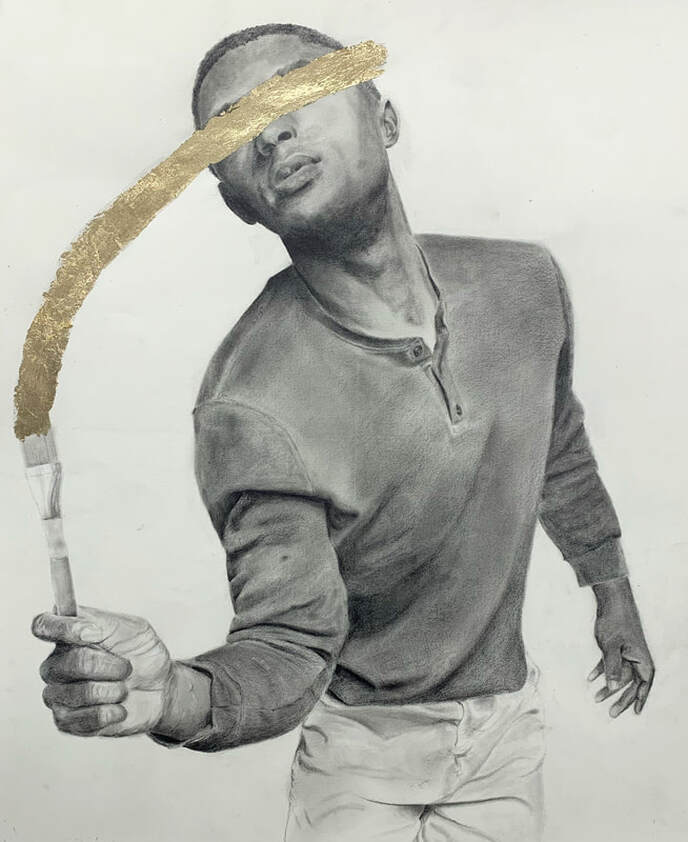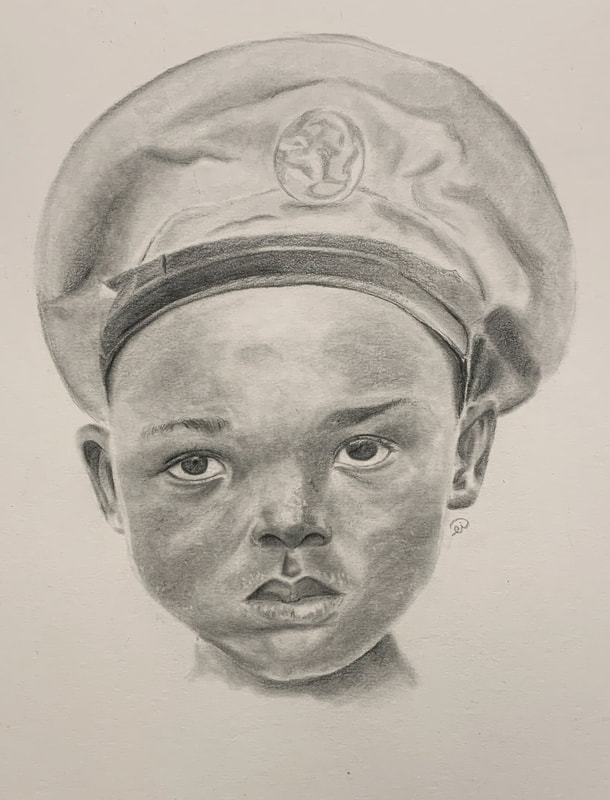Rina Ramsey
Elliott Ingram was born in Decatur, Alabama, before moving to Valdosta, Georgia where he was raised for the remainder of his childhood. Ingram was raised in church being influenced by the Southern Black community. He was taught there was a specific way to be successful. He noticed a pattern within the Black community of people following in their parent’s footsteps, pursuing the medical industry or the military, for example. Ingram wanted to pursue his own path and art is that path. He aims to communicate his experience of growing up in the Black community and how that has impacted his pursuit of art.
Ingram became interested in creating art after taking an interest in anime. He started sketching his favorite characters, finding that he enjoyed drawing. His senior year of high school he registered for AP art, which would be his first art class. When asked what he wanted to draw he replied anime, to which his teacher denied his proposition, which forced him to approach the project from a different perspective– drawing the creators of his favorite anime. This event led him to start exploring photo-realism and pursuing his career in art. Throughout high school and early college he pushed himself to be more intentional with his art, and with the help of professors he found a concrete path of learning developmental skills that propelled his art forward. Ingram credits Professor Edwards with redefining what being a successful artist means.
Graphite is Ingram’s preferred medium, displaying his draftsmanship in three of the four works displayed in the VSU Senior Exhibition. Ingram says his work addresses questions that are presented to him and questions that arise from within him from the perspective of being a part of the African American community. Fatigue is the only painting displayed in the exhibition it is a mixed media piece created in 2021. A black abstract shape centers the composition with three gray orbs that resemble moons surrounding the shape. A strong diagonal line separates the background and foreground. In my opinion, this abstraction resembles surrealism and expression of the unconscious or misunderstood emotions because the moon is sometimes used as a symbol representing emotion. In Cultural Norms a young boy is wearing a military hat and a look of discontent. The piece is asymmetrically balanced with the eyes fixed right below the center, angled up as if the subject is looking at the viewer. He says this piece exemplifies the feelings of discontent of a young person being encouraged to pursue fields of work they are not interested in, such as military professions or industrial careers. Ingram questions what being successful means to the African American community and why those ideas are presented to children as the only way to be successful. Ingram’s self-portrait Untitled uses graphite and gold leaf combined with foreshortening, to create a dynamic composition. The figure is leaning forward, holding a paintbrush that has left a paint stroke of gold leaf over the figure’s eyes. This piece is a self portrait of Ingram; he used the angle of the paintbrush stroke to cover his own eyes but positioned his body to suggest he is painting the viewers eyes. In Purification a figure is standing on a block in a fetal position. The sides of the paper have been burned, closing in on the figure, invoking a feeling of being trapped. This piece is smaller than the rest of the pieces but has much more detail and value. The figure is well defined with reflective lighting on the legs and back. He says his piece Purification is an expression of separateness that he feels from being the only one in his family to pursue the arts. He feels that he cannot discuss his work with his family because of this and having the piece burned is symbolic of letting go of the artist he was to make room for the new artist he is now; to burn away the undergrowth of a forest is to clear a path for new growth.


